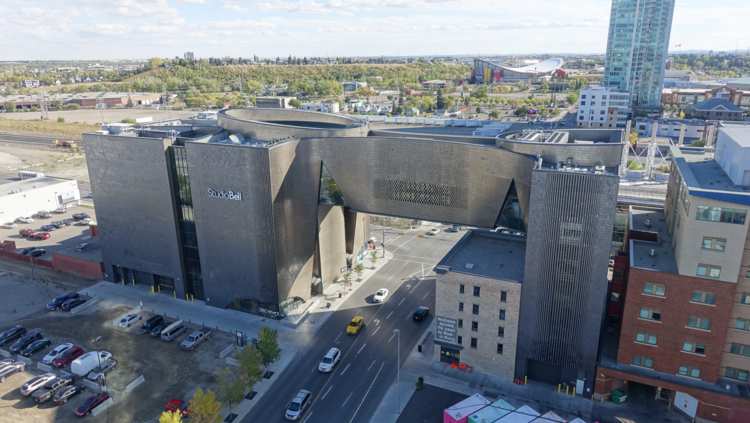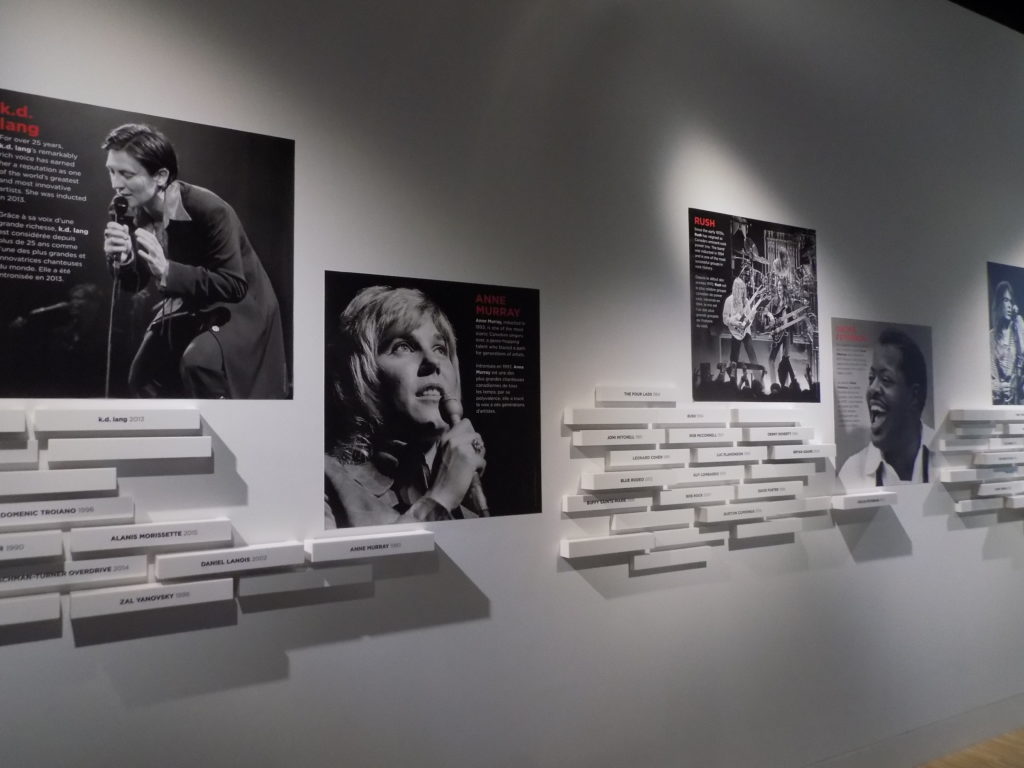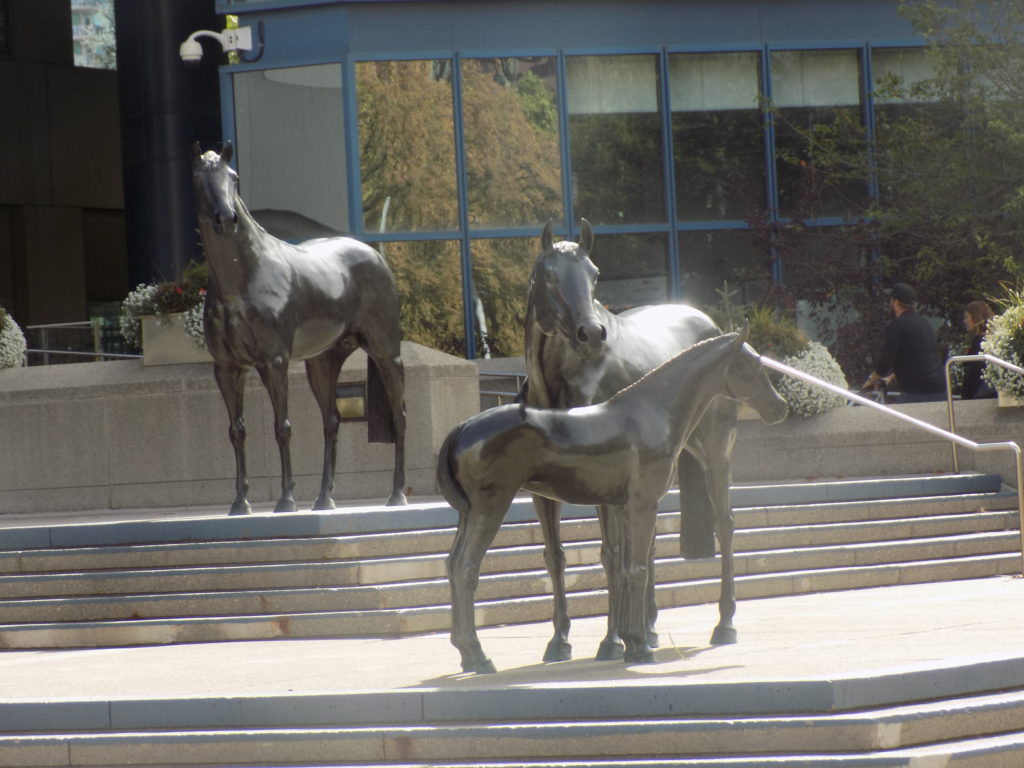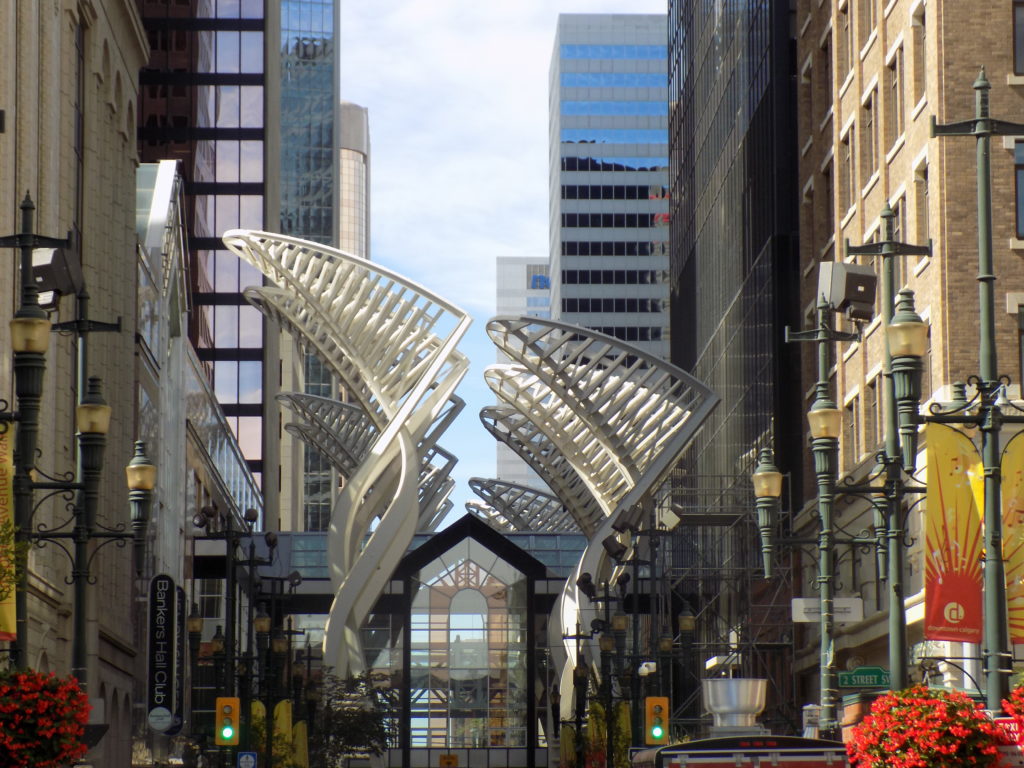It’s probably fair to say that I visited Calgary as something of an accidental tourist. In the introductory post to this series I mentioned the irony that my old expired passport has more entry visa stamps from Germany than any other country and yet I’d never been outside an airport in that country. Calgary would have had a similar status had I maintained the original itinerary of my Western U S and Canada trip. I flew from the east coast to Calgary, rented a car and drove straight to Banff National Park before heading back into the U S mainly to visit Montana and Wyoming.
But there were wildfires that year
that changed my plans. With half of Glacier National Park closed I left a day earlier than planned and instead of merely an overnight stay in Calgary to catch an early morning flight home, I ended up spending the last day of that trip in Alberta’s largest city. So, instead of dropping Calgary into the same stopover status I assigned Los Angeles after passing through that city in transit to and from Japan, it earned a legitimate spot on the list of Olympic host cities and Me.
A look back.
I reached the city Saturday evening and, after dinner, spent part of my night trying to determine how I’d spend an unplanned Sunday in Calgary. The plan that took shape was a simple one. I’d start with a visit to Studio Bell – the home of the National Music Centre (NMC) that had opened barely more than a year earlier – and afterward simply wander about the city seeking some of the more than 50 original works of art placed in every ward as part of an innovative and aggressive Public Art Policy.
The NMC is 14,765 square meters (160,000 square feet) “dedicated to celebrating music in Canada in all of its forms.” The building is designed inside and out to evoke not only musical instruments – particularly organ pipes, guitars and brass – but also the Rocky Mountains, hoodoos, and crevasses that define the landscape of western Canada.
[Aerial photo from Wikimedia Commons by Mack Male from Edmonton, AB, Canada – Calgary East Village, CC BY-SA 2.0.]
In the photo above, the light colored brick building on the right side in front of the street bridge, is the painstakingly restored King Edward Hotel – that the locals fondly call the King Eddy. Built between 1905 and 1910, the original King Eddy housed a bar and blues club that, according to the museum tour guide was also the first integrated club in Calgary. Over the decades, both the neighborhood, called the East Village, and the hotel became run down and the hotel was condemned in 2004. However, in an effort to preserve a piece of Calgary’s musical history, the NMC acquired the building and restored it brick by brick to be a part of the museum.¬† (In the distance, beyond the tower at the top right of the photo, you can see the Scotiabank Saddledome which was originally called the Olympic Saddledome. It hosted the figure skating competition and was one of three venues for ice hockey including the entire final round.)
The museum itself has five levels thematically organized so whether your interest is in the science of music, its social impact, the study and observation of vintage musical instruments, having a chance to perform on your own, or if you simply want to stroll through the Halls of Fame,
you will, as I wrote at the time, “find something that will engage your mind, your eyes and, most importantly, your ears.”
Oh, Canadian.
My first stop after I entered the NMC was at the information desk to obtain a floor plan. I mentioned my plan to walk about the city and named some of the public art I hoped to see. The young woman at the desk asked for my map of the city centre (deferring to the Canadian spelling here) and, in that Canadian way of being helpful, she offered to mark their locations. By the time I returned to retrieve my map, in that Canadian way of being helpful, she’d not only marked the art on my list but added perhaps half a dozen of her own favorites. Here are some I saw:.
Family of Horses:.
As it happened, one of the pieces on my list, the Family of Horses was just around the corner – a mere 450 metres away in front of the Calgary Municipal Building and across from the Olympic Plaza.
The sculpture represents the important role horses played in Calgary’s development. The stallion overlooking the mare and foal symbolizes, “the bond of kinship and strength among families.”
The Trees:.
Walk along the Stephen Avenue Galleria – Calgary’s sole pedestrian only street – and look up at The Trees
notable not only for the striking visual but for their functionality as well. They provide an element of protection for pedestrians by minimizing wind gusts between the buildings.
Wonderland:.
One of the most interesting works sits in front of the Bow Building. Occupying the plaza outside the building is a 12 metre tall bent wire sculpture of a girl’s head. Named Wonderland, this creation by¬† Spanish sculptor Jaume Plensa, is intended to symbolize the hopes and dreams of young Albertans. Like several others in the city, this work invites interaction.
I particularly like the Calgary Herald’s description from 10 July 2012,
Anna is coming to Calgary this fall. She’s 12, from northern Spain, parts her hair down the middle and stands about four storeys tall, from the neck up.
Her giant head, in thick wire mesh, is Wonderland by Jaume Plensa.
The interactive sculpture will be taller than the Family of Man statues by the former public school board headquarters, nearly as soaring as the white Trees sculptures by Bankers Hall, but will appear dwarfed beneath 58-storey Bow tower.
As he presented his design Monday, Plensa cracked that if Norman Foster’s skyscraper is the big blue curve in the tower’s logo, Wonderland is the small red dot.
“Such a huge responsibility to be the small red dot, in between the Calgary community and his beautiful building,” the Barcelona-based artist said. “My piece is not at all trying to compete in terms of the scale of the architecture. I’m trying to link the people using the plaza with the city.”
Since the Calgary Herald story mentioned the Family of Man, I decided to visit it. A CBC Calgary article from 14 May 2016 wrote:
Since their installation in 1968 at the corner of 1st Street and 6th Avenue S.E., the looming figures ‚ÄĒ also known as¬†The Family of Man¬†‚ÄĒ¬†have become a landmark in the downtown and a minor tourist attraction in our city.
Love them or hate them, these sculptures, grouped like a family playing together, stand tall throughout the changing seasons.
They’re a symbol we associate with the city. They’re even the logo for the Calgary Board of Education.
But, Brotherhood of Mankind isn’t originally from here.
It was created by Spanish artist Mario Armengol as part of the British Pavilion for the Montreal Expo in 1967.
…After their Expo showing,¬†Brotherhood of Mankind¬†was bought at auction by a businessman and benefactor, who then donated it to the City of Calgary for tax purposes.
I thought this worth mentioning because this long Olympic journey started with my visit to the  1967 Montreal Expo.
I’ll share one final photo of the work called Tribute to Land –
 If you have read my previous blogs, you probably know that if there’s a turtle to be found, I’m almost certain to find it. If you’re interested, you can read more about these and some of the other works I visited that day in this post where there’s also a link to an album with additional photos including Family of Man.
If you have read my previous blogs, you probably know that if there’s a turtle to be found, I’m almost certain to find it. If you’re interested, you can read more about these and some of the other works I visited that day in this post where there’s also a link to an album with additional photos including Family of Man.




